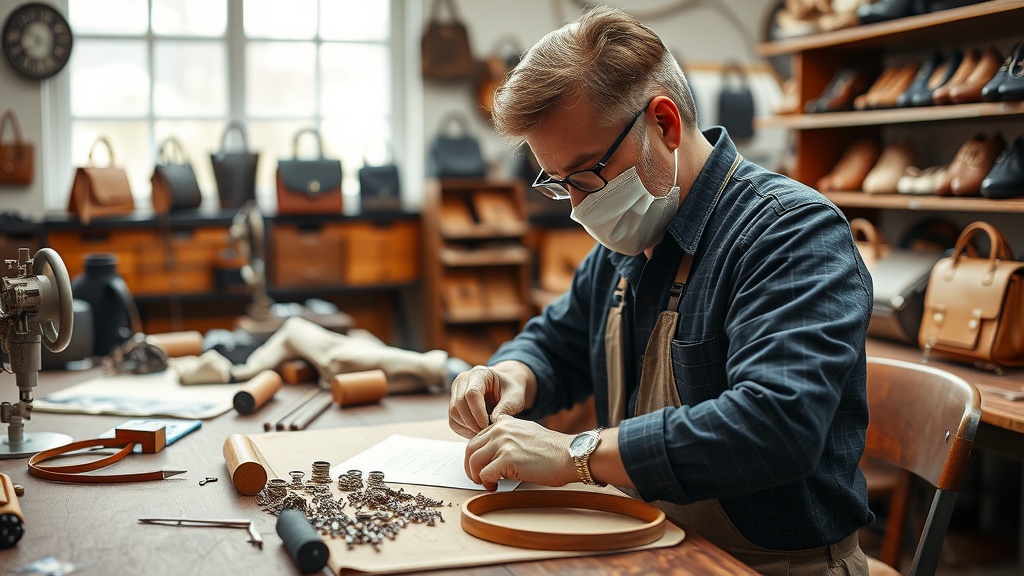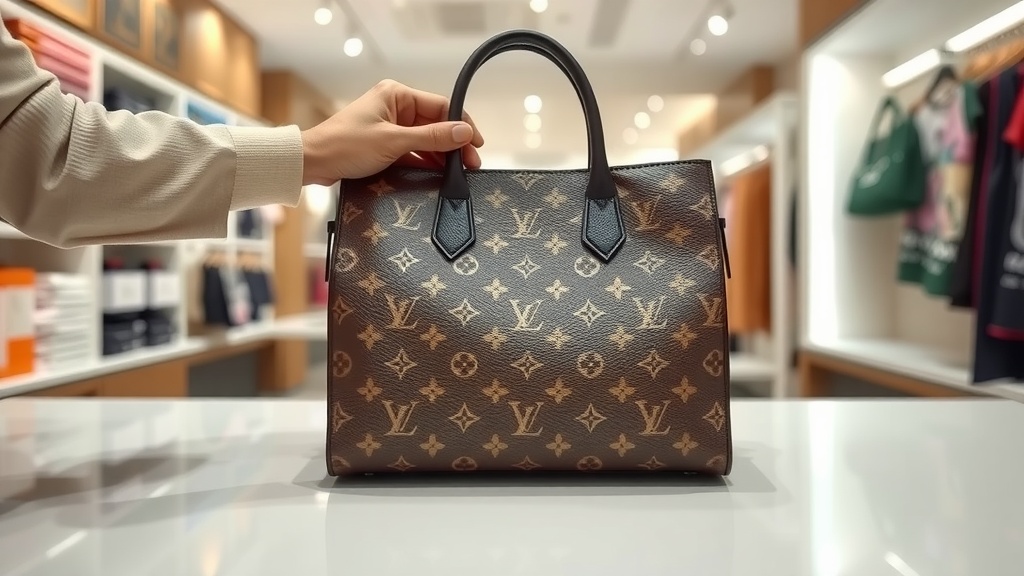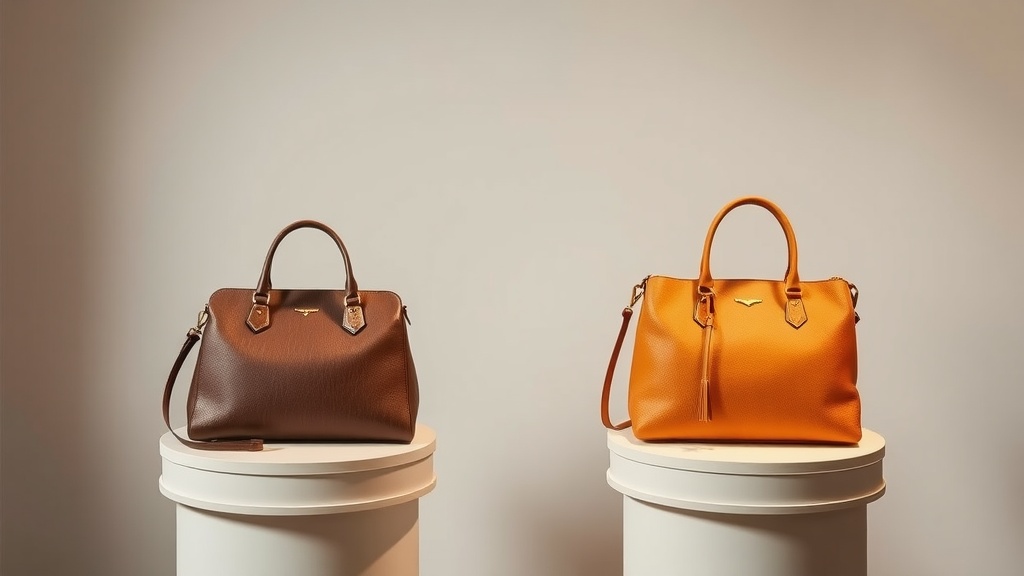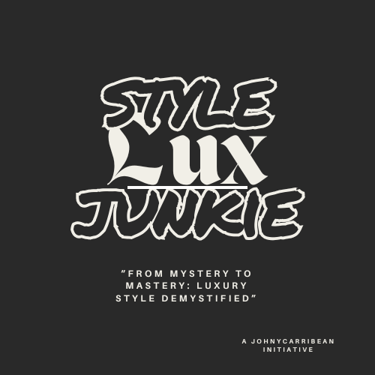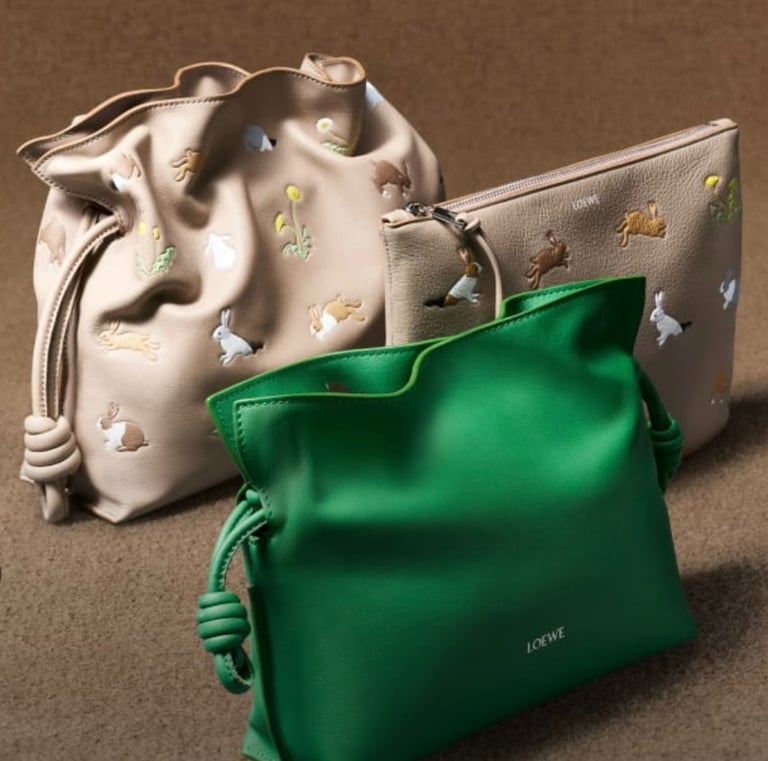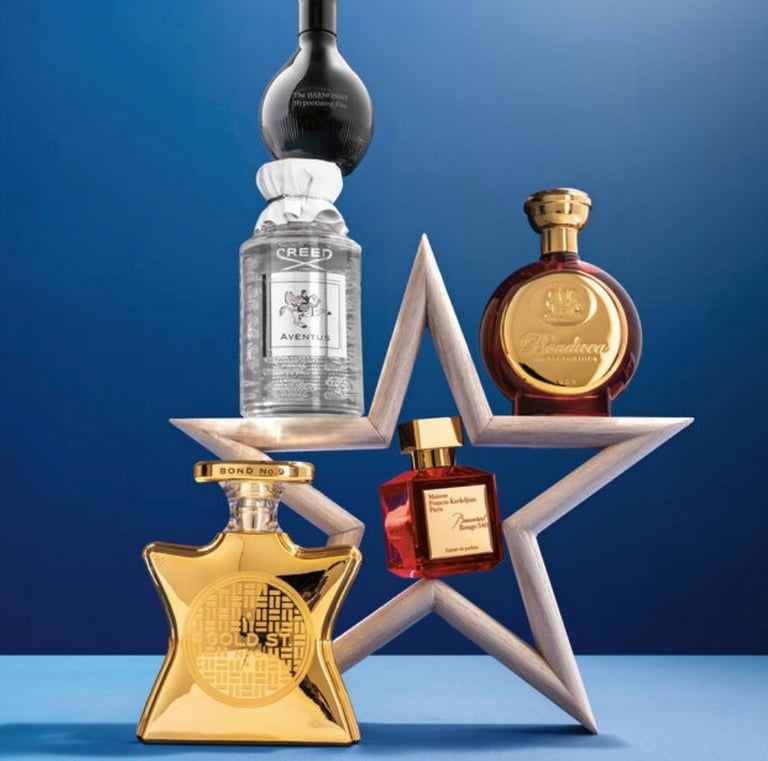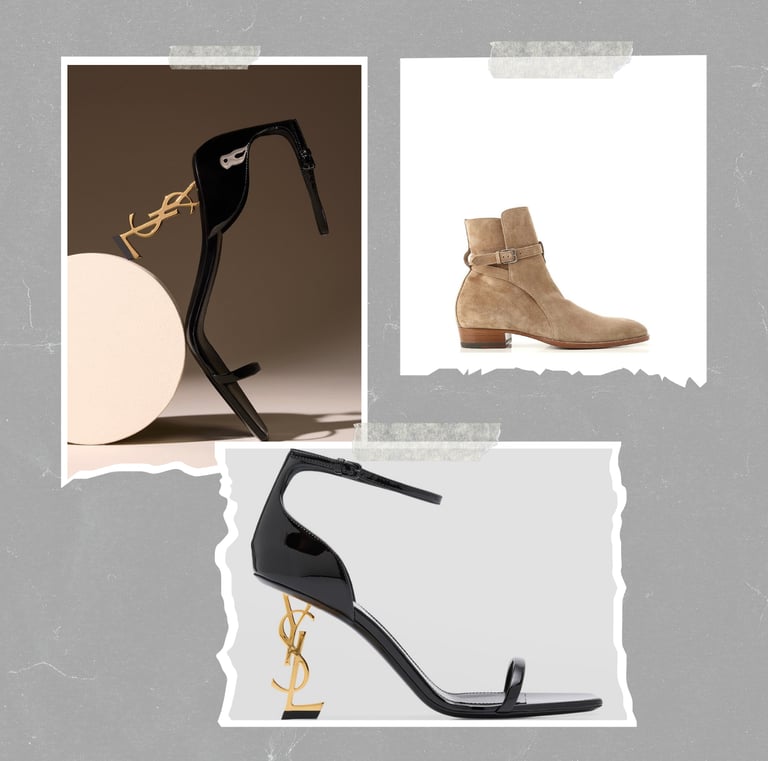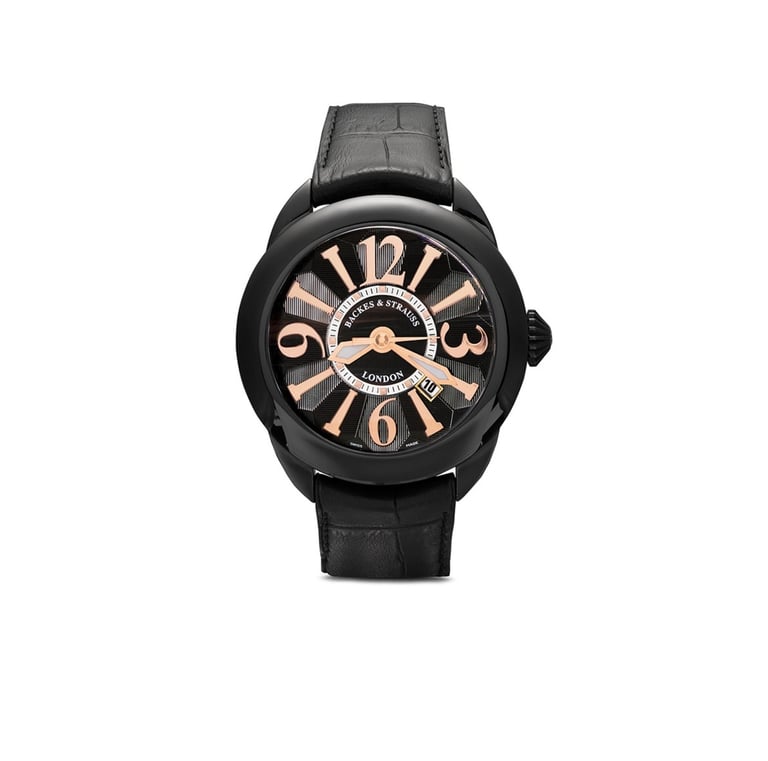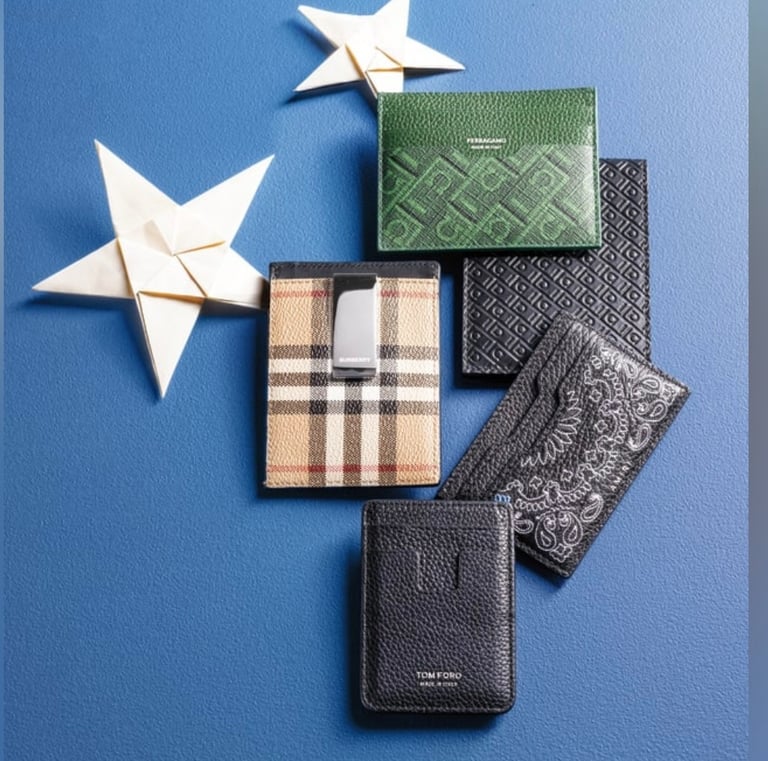Luxury Handbag Shopping 101: How to Spot a Timeless Investment Piece
Elena's fingertips grazed the buttery-soft lambskin Chanel bag behind the glass, each stitch a quiet promise of lasting style. Yet, a lingering doubt whispered: is it truly timeless? Investing in timeless pieces means choosing handbags that surpass fleeting trends. This guide offers verified tips, valuable insights, and practical advice to help you confidently navigate luxury handbag investments.
THE LUXE SHOPPER'S GUIDE: WHERE AND HOW TO BUY HIGH-END FASHION
4/2/2025

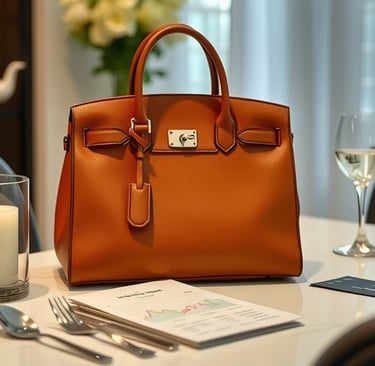
Luxury Handbag Investment Guide – Identifying Worthy Pieces
Luxury handbag shopping isn't merely a transaction—it's a strategic investment. But how can you confidently spot a timeless luxury handbag that will not only retain but potentially increase in value? Elena had always been captivated by the allure of luxury handbags—the smooth touch of fine leather, the gleam of polished hardware, and the quiet promise of elegance. However, standing before the Chanel display window in Paris, she realised there was more to luxury handbags than just aesthetic appeal. Each bag represented potential—not just in style, but as an enduring financial asset. Yet, the art of distinguishing fleeting trends from timeless classics felt like navigating an intricate maze.
In this comprehensive luxury handbag investment guide, you'll learn exactly how to recognise timeless handbags that make sound investments. You’ll explore critical insights into craftsmanship, brand prestige, market trends, and authentication, ensuring you make informed decisions. Luxury handbag investments hinge on a bag’s ability to transcend momentary fashions. It's about spotting that rare blend of iconic design, exceptional quality, and long-term desirability. To successfully invest, you must master recognising these characteristics clearly. Through Elena’s journey—her triumphs, uncertainties, and revelations—you'll gain practical advice and strategic insights that turn handbag shopping into a lucrative endeavor. You'll also have opportunities to interact and test your knowledge along the way.
Interactive Quiz: Which Luxury Handbag Is Your Best Investment?
Decoding Timeless Designs – Hermès Birkin, Chanel, and Iconic Bags
Not all luxury handbags become iconic—meaning they consistently remain fashionable, relevant, and valuable over time. Elena realised this quickly, gleaning insights from seasoned collectors during her visits to exclusive boutiques in Milan and Paris. "True icons," her mentor Madame Claudette advised her over coffee, "are always relevant. They embody a narrative—a story of heritage, exclusivity, and unrivalled craftsmanship." Elena recalled her first visit to the Hermès boutique on Rue du Faubourg Saint-Honoré. The Hermès Birkin she saw there was not merely a bag but a symbol of status and meticulous artisanship. Crafted painstakingly over several days by a single artisan, every stitch and piece of hardware spoke to an uncompromising standard of excellence.
At Chanel, the legendary 2.55 bag captivated Elena with its quiet sophistication. Created by Coco Chanel in February 1955, the design was revolutionary, introducing practicality blended seamlessly with elegance. The quilted pattern, inspired by jackets worn by stable hands, and the innovative chain strap symbolised a new era of women's freedom and independence. Similarly, at Dior, the Lady Dior handbag fascinated her with its blend of modern glamour and classic grace. Named after Princess Diana, who famously adored it, the bag captured the essence of refined femininity. According to Vogue Business (2024), iconic models such as the Hermès Birkin, Chanel 2.55, Dior Lady Dior, and Louis Vuitton Speedy regularly appreciate by 8-15% annually. But what exactly makes these designs immune to time? The key lies in their timeless aesthetics, unparalleled craftsmanship, cultural significance, and controlled exclusivity. As Elena began to understand these subtle yet powerful factors, she realized how identifying iconic designs early could significantly impact her handbag investment portfolio's future value.
Craftsmanship Matters – Quality Indicators for Authentic Chanel Bags and More
Elena vividly remembered her first visit to a Florentine leather workshop, where artisans meticulously transformed raw materials into pieces of art. The air smelled rich with fresh leather, and the rhythmic sound of precise stitching filled the room, resonating with a dedication to excellence. She learned that true craftsmanship, the backbone of any luxury handbag, begins with superior materials—fine leathers like calfskin, lambskin, and exotic skins such as crocodile or python. The leather’s origin, texture, and treatment determine not only the bag's aesthetic appeal but its longevity. Next, Elena discovered the importance of stitching. Exceptional craftsmanship is evident through consistent, tight, and even stitches. Hand-stitched bags often signify higher value, given the considerable skill and time required compared to machine stitching. Hardware, another critical element, often overlooked by novice investors, also greatly impacts a bag’s value and durability. Authentic luxury handbags typically feature hardware made from brass or gold-plated metals, showcasing superior resistance to wear and tarnishing.
She further learned about details like zippers and clasps, which must be smoothly functional and intricately finished. Elena realized these subtle yet significant details often distinguished authentic Chanel bags from counterfeits. To confirm her newfound knowledge, Elena regularly consulted auction records from Sotheby's, observing how craftsmanship directly influenced resale values and investment returns. Each detail she absorbed from her visits and studies deepened her understanding and sharpened her investment acumen.
Hermès Birkin Resale Value – Exploring the Luxury Handbag Market
Geneva was Elena’s next stop, renowned for its discreet yet influential luxury resale market. Nestled between elegant cafés and luxury boutiques, Elena met Stefano, an esteemed authority in handbag valuation, whose quiet confidence hinted at decades of behind-the-scenes expertise. As they sat down for coffee, Stefano began sharing insights that fascinated Elena. "The Hermès Birkin isn't merely a bag," he explained, "it's a cultural phenomenon—a financial instrument wrapped in artistry." Stefano's eyes twinkled as he recounted the meticulous craftsmanship, limited availability, and brand prestige contributing to the Birkin’s unparalleled market performance. Stefano highlighted the deliberately controlled production practices of Hermès. "They meticulously manage supply to sustain exclusivity, ensuring that demand always outpaces availability," he said. This scarcity principle fascinated Elena, reminding her of lessons she'd learned earlier in Paris. Stefano further detailed how limited editions and exclusive colorways—such as the delicate Rose Sakura or the strikingly rare Himalayan crocodile—commanded astonishing premiums at auctions worldwide.
Elena eagerly took notes as Stefano cited recent resale figures from leading luxury resale platforms like Rebag and TheRealReal. These platforms consistently reported Birkin bags appreciating between 10% and 20% annually, significantly outperforming many traditional investments. He shared remarkable anecdotes of individual Birkins that had sold for hundreds of thousands, even breaking records at auction houses such as Christie's and Sotheby's. Stefano also revealed subtle nuances that affected Birkin resale value—elements Elena had never considered. Condition, original packaging, proof of authenticity, and even a bag’s provenance significantly influenced investor and collector interest. "A Birkin with an intriguing history or owned by a notable figure," Stefano added, "can double its expected market value overnight." As Elena absorbed these detailed insights, she began to see clearly how vital understanding these hidden dynamics—brand strategies, market behavior, and collector psychology—was for making astute handbag investments. Elena left Geneva not only enlightened but inspired to leverage this newfound knowledge strategically, positioning herself to anticipate and capitalise on market shifts confidently.
Sustainable Luxury – Investing in Ethical Handbag Brands
Elena’s quest for timeless investments soon led her to London, a city buzzing with a new kind of luxury energy—one where fashion and ethics met. She attended a sustainability roundtable hosted by a high-profile fashion house, where leading designers and investors discussed how the future of luxury depended not just on aesthetics, but on responsibility. One brand stood out to her: Stella McCartney. Known for its bold stand against animal leather, the brand was producing high-end bags made from eco-friendly alternatives like mycelium leather—a biodegradable material grown from mushrooms. Elena marvelled at the texture and structure of these bags; they didn’t just feel luxurious, they carried a mission. She learned that Gucci’s “Off the Grid” collection, made with recycled Econyl nylon and sustainable trims, was more than a design shift—it was a statement of values. According to a Bain & Company report (2024), more than 60% of Gen Z and millennial luxury buyers now factor sustainability into their purchasing decisions. Elena realized that these values weren’t trends—they were powerful market forces reshaping demand.
Back at her hotel, Elena began researching deeper. She found that ethical fashion brands like Nanushka and Matt & Nat, while lesser-known, were gaining rapid popularity for their minimalistic designs and clean environmental records. These labels had small production runs, making their bags rare, collectible, and ideal for long-term investments. She also discovered that vintage and pre-loved luxury bags were seeing a renaissance. Fashion-conscious buyers preferred buying authenticated second-hand bags from trusted platforms like Vestiaire Collective, valuing the reduced environmental footprint and unique character that came with pre-owned items. Through all this, Elena saw that sustainability wasn’t just a moral compass—it was a roadmap to future profitability. Bags that balanced aesthetics with ethics, rarity with responsibility, and story with substance were poised to become the next generation’s icons. Her investment philosophy evolved once again. From now on, every bag she added to her portfolio would have to earn its place not just by design or value—but by impact.
Authentication Essentials – Protecting Your Handbag Investment
Of all the lessons Elena had absorbed on her journey into luxury handbag investing, none struck her as deeply as the one involving authenticity. The moment had come unexpectedly—an invitation to an elite charity gala in New York where her close friend Caroline proudly unveiled a new acquisition: a pristine Hermès Birkin. The compliments flowed until a whispered observation from a seasoned collector cast a shadow of doubt. "That stitching looks off," she said, barely audible above the clink of crystal. Within days, Caroline’s dream unraveled. The Birkin, acquired from a seemingly reputable online boutique, turned out to be an exceptional counterfeit. The loss was not only financial but emotional—an $18,000 reminder of how deceptive the counterfeit market had become. Determined to avoid such a misstep, Elena dove into the world of handbag authentication. She quickly learned that in the high-stakes world of luxury accessories, authentication isn’t optional—it’s everything.
Her first stop was Entrupy, an AI-powered platform that uses microscopic imaging and machine learning to analyse and verify luxury goods. With a handheld scanner and real-time database access, it offered on-the-spot assessments. Elena also partnered with trusted services offered by major auction houses like Sotheby's and Christie’s, where specialists with decades of experience inspected everything from logos and hardware to lining and stitching patterns. She began collecting reference guides, like Chanel’s hologram sticker and serial number chart, Hermès’ blind stamp identification codes, and Louis Vuitton’s date code formats. Through meticulous comparison—fonts, embossing depths, stitching angles—she trained her eye to notice what most others wouldn’t.
Elena learned that certain factors dramatically enhanced the resale value of authenticated bags:
Original packaging and dust bags
Certificates of authenticity or proof of purchase
Documented service history from the brand
Ownership provenance, especially if linked to celebrities or exclusive collections
She also started purchasing bags only through platforms that guaranteed authentication or offered buyer protection programs, such as Fashionphile, The RealReal, and Vestiaire Collective. Authentication, Elena realized, was not just a process—it was a pillar of trust that fortified the value of every piece in her collection. And for collectors and investors alike, trust was the most valuable currency in the world of luxury fashion.
When shopping for luxury handbags, checking the condition is crucial. Just like this beautiful Louis Vuitton handbag, a classic design that many consider a reliable investment. Notice how the bag's material looks robust and well-maintained. This is a good sign that it can stand the test of time.
Diversifying Your Portfolio – Strategic Handbag Investment Tips
As Elena's collection expanded, so did her perspective. The more she immersed herself in the world of luxury handbags, the more she realised that smart investors don’t just chase icons—they build portfolios. Just like in finance, diversification wasn’t just about reducing risk; it was about unlocking new opportunities. She returned to Milan to meet with a boutique investment group that specialised in luxury collectibles. Over espresso and velvet notebooks, they introduced her to the idea of treating handbags like fine art—assets that appreciate with the right timing, condition, and cultural relevance. "Don’t only go for the obvious," one advisor told her. "Yes, the Birkin is your blue-chip stock, but what about your growth assets? What about your emerging markets?"
This sparked Elena's deep dive into lesser-known luxury brands with rising cult status. Brands like Moynat, Delvaux, and Valextra were flying under the radar but had impeccable craftsmanship, rich heritage, and limited production—making them prime candidates for future appreciation. She studied the market trends on platforms like Chrono24 and Lyst Index, watching how specific collections gained momentum. Elena also diversified by style and function. While classic top-handle bags retained value, she noticed the growing appeal of mini bags, belt bags, and reissue designs—often released in small batches that made them highly collectible. A Bottega Veneta Cassette in an unconventional seasonal hue might not have the same longevity as a Chanel flap, but in the short term, it often spiked in resale value post-sellout. She tracked the correlation between influencer visibility and value surges—bags featured prominently on high-profile Instagram accounts or red carpets could jump in demand overnight. As she refined her tracking system, Elena created her own spreadsheet comparing historical price charts, auction results, and social trend analysis.
Her portfolio now had layers—anchored by stalwarts like Hermès and Chanel, supported by eco-conscious newcomers, and spiced with experimental pieces that might define the next wave of luxury. She had evolved from a collector into a strategist, blending passion with data and story with structure. Diversification, she realized, wasn't about indecision. It was about vision.
Storage Secrets – Preserving Your Luxury Handbag's Value
Despite building an enviable portfolio, Elena knew her work wasn’t done the moment she brought a new piece home. Proper storage, she learned, could make the difference between a handbag that appreciated gracefully and one that aged poorly. Value, after all, wasn’t just about acquisition—it was about preservation. Her journey to understand the art of storage began in Tokyo, where she visited a renowned collector known only as Madame K. Inside a temperature-controlled room that resembled a high-security vault, Elena was introduced to the science of luxury handbag preservation. Each bag was stored upright, stuffed with acid-free tissue, and wrapped in breathable dust covers—not plastic, which could trap moisture and lead to mold or hardware tarnishing.
"Every material breathes differently," Madame K explained. "You don’t store a lambskin Chanel the same way you’d store an exotic-skin Hermès." From avoiding sunlight to rotating usage, Elena took copious notes. She learned that even how a bag was placed on a shelf—never hanging by the straps, always resting gently—could impact its structural integrity. When Elena returned home, she invested in modular shelving, a humidity regulator, and even archival boxes with UV-resistant panels. She also categorised her bags by material and usage frequency, ensuring that each piece received occasional use or repositioning to avoid permanent creases or wear marks. She further discovered that documentation played a vital role in resale: keeping receipts, certificates, and original boxes could increase value by 10–15%, according to data from The RealReal and Rebag. Some collectors even took photos of their bags’ condition annually, maintaining a visual record that reassured future buyers of authenticity and care. Elena no longer saw storage as an afterthought. It was an essential layer of her investment strategy—an invisible but invaluable safeguard of her portfolio’s worth.
Making the Right Choice – Elena's Guide to Timeless Handbag Investments
Elena stood once more inside the softly lit Hermès flagship on Rue Saint-Honoré in Paris. Months of research, travels, and thoughtful acquisition had brought her here—not as a novice shopper, but as a confident investor. In her hands was a gold Togo leather Kelly 28 with palladium hardware. It wasn’t just a purchase. It was the culmination of a philosophy she had carefully cultivated. The decision wasn’t driven by impulse but guided by a blend of factors she now understood deeply—brand history, craftsmanship, resale performance, scarcity, and emotional resonance. The Kelly had everything: timeless design, versatile functionality, exceptional materials, and a heritage that traced back to Grace Kelly herself.
As she finalised her decision, she reflected on the meticulous checklists she now used when evaluating any potential purchase:
Is the brand legacy proven in both fashion and financial value?
Does the craftsmanship meet archival standards?
Is this a sought-after size, color, or hardware combination?
Does this piece fill a strategic role in my portfolio?
This Kelly didn’t just check all the boxes—it transcended them.
That afternoon, as she stepped out into the Parisian sun, Elena felt something beyond the joy of owning a beautiful bag. She felt empowered by knowledge. She was no longer just curating a wardrobe. She was building wealth, history, and narrative—all through leather and stitch.
When it comes to luxury handbags, distinguishing between timeless styles and fleeting trends is essential. The image before you showcases two distinct handbags: a classic brown bag and a vibrant orange bag. Both are elegant in their own right, but they cater to different fashion philosophies.
Beyond the Purchase – Continuing Your Luxury Handbag Investment Journey
Elena’s story doesn’t end at checkout. The luxury handbag market is ever-evolving—shaped by fashion weeks, celebrity influence, emerging designers, and global economic shifts. Staying ahead means staying informed. She began subscribing to auction house previews and fashion investment newsletters. She joined invite-only collector forums and started hosting quarterly reviews of her portfolio’s market standing. She partnered with a photographer to document her collection, not for vanity—but for verification, storytelling, and valuation. Most importantly, she began mentoring younger investors, sharing her knowledge through podcasts and panel talks. Elena understood that handbags, like all valuable assets, derive power not just from exclusivity—but from education and access.
And so, her journey continues—and so can yours.
Start your luxury handbag investment journey today. Explore our curated selection and begin building your legacy—one timeless piece at a time.
Next: Explore "Behind Closed Doors: Secrets of the Hermès Birkin Collector."
FAQ Section – Your Most Pressing Questions, Answered
What makes a luxury handbag timeless?
A timeless handbag is one that transcends trends. It features classic design elements, impeccable craftsmanship, and a heritage of desirability. These pieces tend to hold or increase in value over time—think Hermès Birkin, Chanel 2.55, and Dior Lady Dior.
How can I authenticate a luxury handbag with confidence?
Authentication should be approached with both technology and expertise. Platforms like Entrupy use AI to scan materials and hardware at a microscopic level. Pair this with human expertise from respected auction houses like Sotheby’s or Christie’s to leave no doubt.
Which brands are best for long-term handbag investment?
Hermès, Chanel, Louis Vuitton, and Dior are historically strong. But watch for rising stars like Bottega Veneta, Delvaux, and Moynat. These brands blend craftsmanship and exclusivity, giving them promising resale potential.
How does condition affect a handbag’s value?
Significantly. Bags in mint or 'like new' condition with original packaging, tags, dust bags, and receipts can command 20–30% more in resale markets. Even minor creasing or hardware scratches can reduce desirability.
What’s the safest way to buy and resell investment handbags?
Use trusted platforms like The RealReal, Rebag, and Vestiaire Collective. These offer buyer protection, expert authentication, and large communities of serious collectors.
How should I store my handbags to maintain value?
Store in climate-controlled environments away from direct sunlight. Use acid-free tissue to maintain shape, avoid hanging bags by handles, and rotate them periodically. UV-protective archival boxes are ideal for exotic or rare pieces.
Can sustainable luxury handbags be a good investment?
Yes—if they’re produced in limited numbers, made by reputable brands, and align with shifting consumer values. Stella McCartney and Gucci’s “Off the Grid” collection are strong examples of sustainable design with market appeal.
Should I insure my collection?
Absolutely. As your portfolio grows, insuring your collection protects against theft, damage, and loss. Specialized luxury goods insurance policies are available through brokers who work with art and collectible portfolios.
